At our recent event in London, we invited a range of industry experts to talk about “Meeting the Challenge of Change in a Polarised World”. All of the talks were fascinating and focused on maximising success, delivering tangible business value and embracing the opportunities presented by digital innovation.
From these talks, we have pulled out 6 key learnings that we think CX leaders should be aware of as they navigate the changing CX landscape. To download the slides in full fill out the form at the bottom of this page.
To skip to the specific learnings use these links:
- Automation FOR not OR humans
- Building consumer trust through CSAT
- Considerations for technology and implementation
- CX trends for 2023
- Giving agents the tools that they need
- Understanding conversation pain points
Automation FOR not OR humans
In Route 101 CEO Russell Attwood’s keynote, he discussed how organisations can meet the challenges of changing CX environments. One of the key areas of focus was leveraging AI and Automation in an effective way to deflect inbound contact and reduce repetitive (and expensive) manual handling. As attitudes towards AI evolve, Russell stressed the importance of understanding that AI is not here to replace a human workforce but to enhance a CX team and improve the experience for agents and customers.
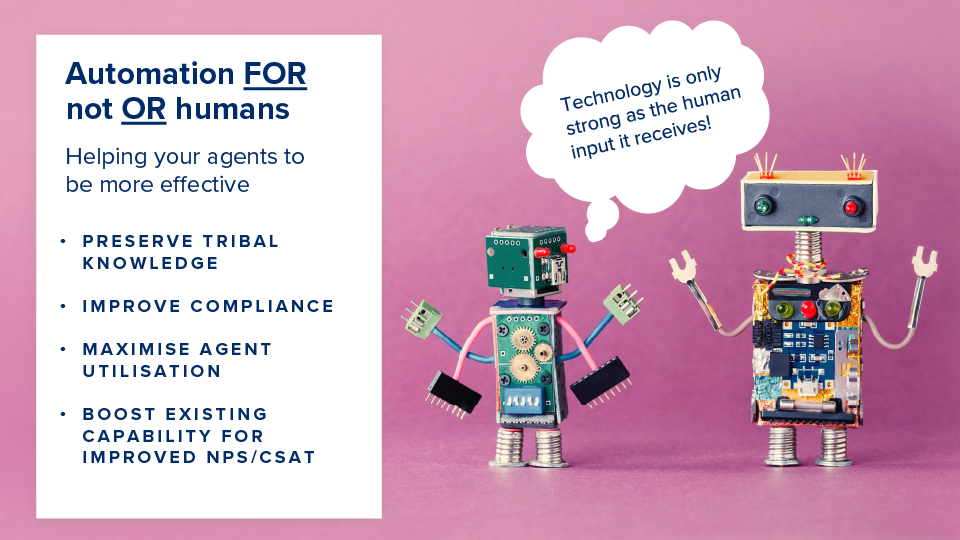
Russell highlighted that AI and automation are extremely powerful tools that can greatly reduce the strain on a contact centre by helping customers to help themselves via self-service and through AI-assisted channels. However, these tools are not designed to replace human agents, they are designed to support a live workforce and enable organisations to deliver a better service. Russell highlighted the operational benefits that conversational AI and automation can bring – explaining that AI has been shown to increase self-service adoption by at least 30% whilst implementing an intuitive knowledgebase can reduce inbound contact by circa 25%.
This reduction in inbound activity frees up agents to handle more complex tasks, resulting in lower wait times for customers and a happier, more engaged workforce. Not only that but AI and automation can also surface key information relating to the interaction or help answer customer questions in real-time to help agents deliver seamless customer service.
Customer satisfaction builds trust
Jo Causon, CEO of The Institute of Customer Service discussed “Keeping the focus on customers in the new world of work.” Using data from the 2023 UK Customer Satisfaction Index (UK CSI ) Jo looked at levels of consumer satisfaction across multiple industries and spent some time highlighting the importance of trust when it comes to building customer loyalty.
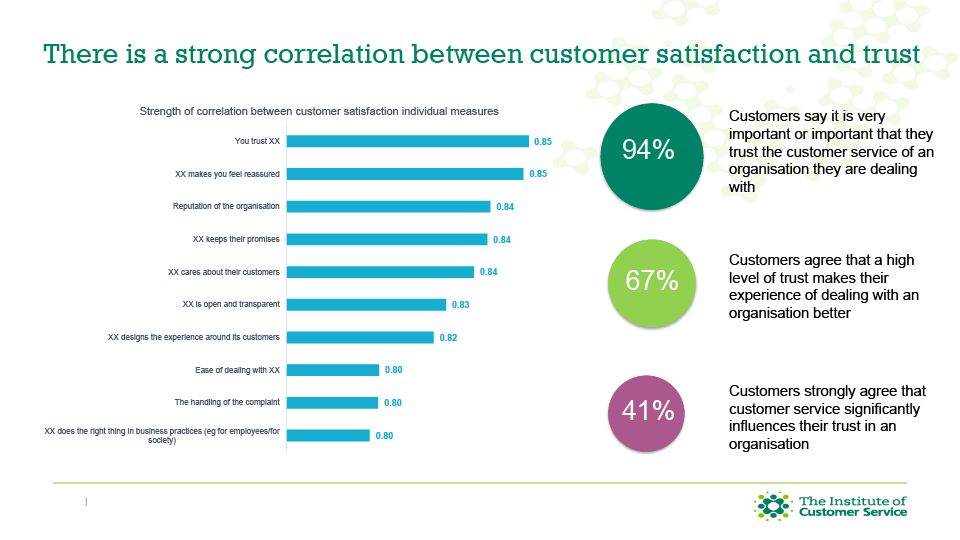
Of the 26 measures that make up the UK CSI the strongest correlation with customer satisfaction was trust. 94% of customers said it was very important or important that they trust the customer service of a brand they deal with and 41% of customers strongly agreed that customer service influences how much they trust an organisation.
These stats show how important customer service is to building trust in a brand and how much previous consumer experiences influence this. Customers with high levels of trust are shown to be much more likely than average to stay as a customer, recommend that organisation to others or even pay more for excellent service. A good reputation for customer satisfaction combined with well-trained staff and high-quality products or services are the biggest drivers of trust identified by customers in the study.
However, negative interactions can have as big an impact as positive - so organisations need to be careful they don’t disappoint. The UK CSI also showed that customers’ biggest fears are that organisations will become harder to contact and that they will seek to maximise profits at the expense of customer service.
It is clear from these findings in the UK CSI that organisations must seek to implement self-service and automation technologies in a sensitive way, or risk damaging customer satisfaction and harming consumer trust. The research also reinforced the message that the power of automation lies in enriching the service experience, not replacing it.
Considerations for successful technology implementations
Presenting some early findings from an exclusive research report the CCMA is carrying out in partnership with Route 101, Stephen Yap from the Call Centre Management Association (CCMA) spoke about the “Keys to success in contact centre implementation”. Delving into interviews with major CX leaders from a range of sectors across the UK, Stephen highlighted common concerns and pitfalls when introducing new CX technologies to the contact centre.
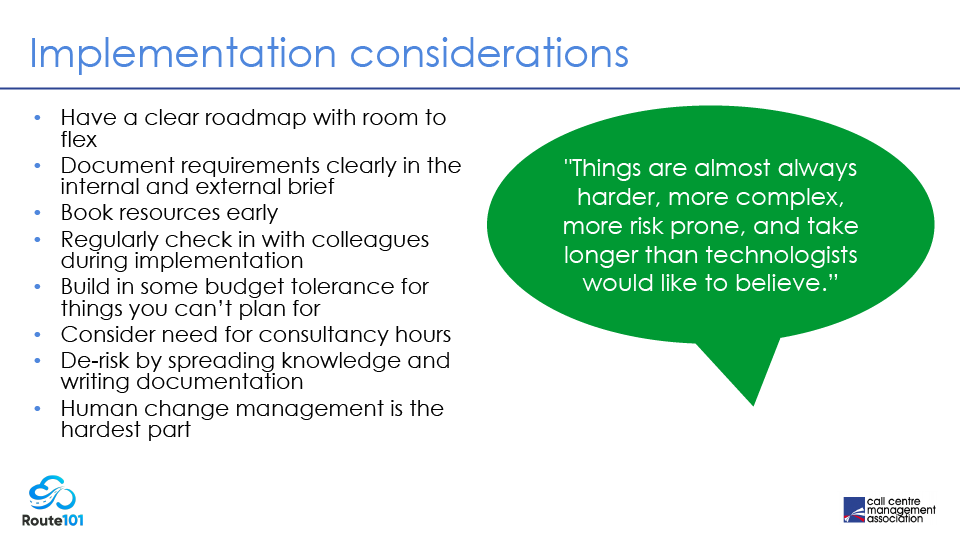
In his session, Stephen explored the key considerations for organisations looking at implementing new technologies into the contact centre – evaluating the key factors that determined success in a transformation program. Drawing on the extensive interviews with CX leaders, he emphasised the importance of a clearly defined roadmap detailing every stage of the customer journey. Highlighting a requirement to build some flex into transformation plans to cater for unplanned costs and allow for reactive adjustments to projects and timescales, Stephen shared some examples of real-life pitfalls and challenges encountered by organisations across different sectors when embarking on transformation.
Stephen’s research also stressed the value systems integrators can bring to a transformation project. He explained that to reduce the risks of encountering unforeseen issues organisations should consider employing consultants with expertise in implementing and integrating their chosen software. These experts will have experience with similar projects so will be able to flag any key areas for attention that in-house team members might have missed, ultimately saving time and money in the long run.
The full research report will be published on 20th March.
CX trends for 2023
Emily Freeland, CX Strategist at Zendesk gave a talk on the CX trends organisations should expect to see in 2023. These trends focused on 5 key areas including AI, personalisation, consumer sentiment, collaboration and conversational experiences.
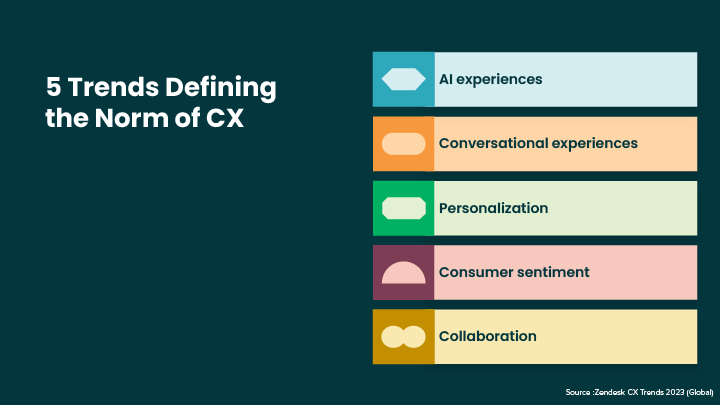
In terms of collaboration, Zendesk expects teams to become more integrated, with 64% of CX leaders aiming to merge their CX responsibilities or teams in 2023. By integrating tasks across teams, organisations can move away from a solely reactive approach to CX and start to include proactive and preventative measures as well. By doing this they can greatly improve their customer satisfaction whilst also turning service departments from cost centres to revenue drivers.
Another of the trends that Emily covered in her talk was the empowering nature of conversational experiences. 66% of consumers said that they would spend more time with a brand if they are able to converse seamlessly across multiple channels. This shows a strong desire from consumers to have these conversational experiences no matter the contact channel they choose. However many CX leaders have admitted to trailing behind on this, with 60% reporting that whilst they haven’t implemented conversational customer service yet, their organisations are planning to.
For a more in-depth look at some of the other trends in the Zendesk report see our recent blogs on attitudes to AI and Automation, delivering personalised experiences and understanding the power of customer sentiment or download the report in full.
Giving agents the tools that they need
Gregg Widdowson from NICE gave a talk about how to lighten the load on contact centre agents. To do this he emphasised the importance of giving agents everything they need to deliver exceptional customer service.
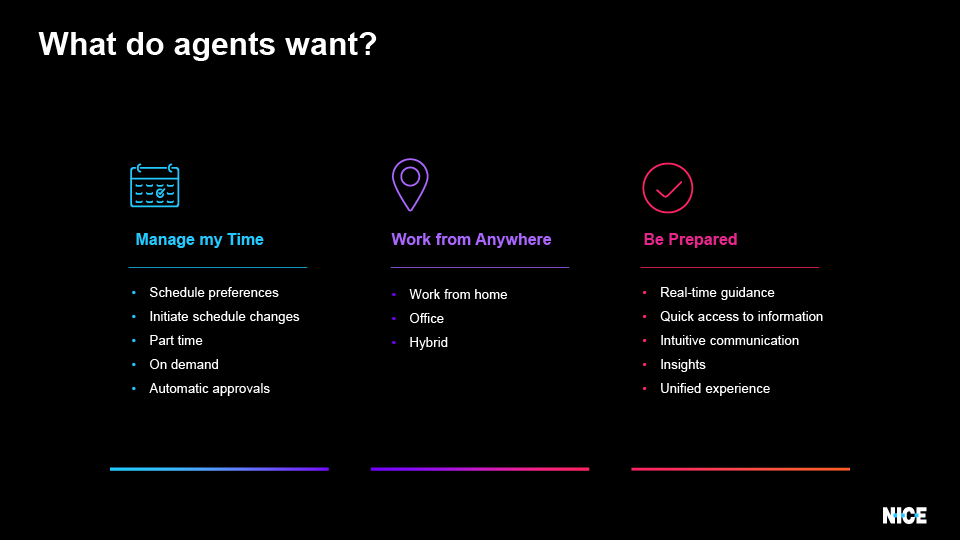
Agent churn is an ongoing issue for CX leaders, so making sure their jobs are as frictionless as possible is a great way to mitigate this risk. The modern agent wants to be able to work from the place that most suits them, at the time that suits them, and for each agent, it will be different. Some will want to work from home, some will want to be in an office, and some will want a hybrid approach. Agents also want to be able to set their own schedule preferences and proactively initiate changes. It is vital that CX leaders find a balance between the demands of their workforce and the demands of the organisation.
As well as these workforce management issues, Gregg highlighted the importance of ensuring agents have everything they need to be prepared for any the customer interaction they might have. He explained how tools like real-time interaction guidance, content surfacing to give agents quick access to relevant data and AI-powered customer insights can empower agents to communicate intuitively with customers.
Gregg explored how tools such as a unified agent workspace can bring all interaction data into one space - enabling CX leaders to empower their agents with everything they need.
Understanding conversation pain points
To help our delegates understand the nuances of conversation, Itai Bercovier, UX researcher and Conversational AI consultant at Mazaru explored the importance of understanding the conversation pain points within service conversations.
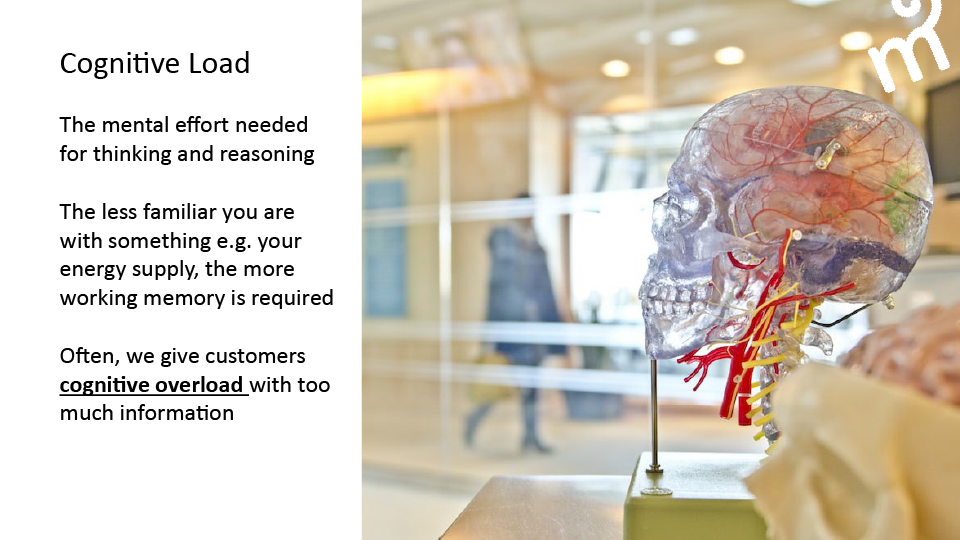
When considering the language used across service communications it is important that you do not ask too much of the reader. If the mental effort (or cognitive load) needed for your customer to understand a piece of content is too high they will find it harder to ingest the information. This can be compounded when the topic is complicated or unfamiliar to the user.
For example, if an FAQ or knowledge base relating to an insurance policy is filled with long in-depth paragraphs filled with information then users will not take it in. If the customer cannot easily get the information they need from your website they may get in touch with an agent, putting strain on the contact centre - or they may even get frustrated and go elsewhere.
Itai emphasised that there are many things organisations can do to avoid this; including reducing sentence length and word count, breaking information into easily digestible sections, attempting to use shorter words, and avoiding “business speak”. By taking into account these simple steps when creating copy for important service communications, organisations can ensure they are making things as accessible to the consumer as possible.
Read the full presentations
These are just 6 highlights from a full day of insight. If you would like to see the full presentations fill out the form below, or if you have any questions get in touch.
Download the slides in full


